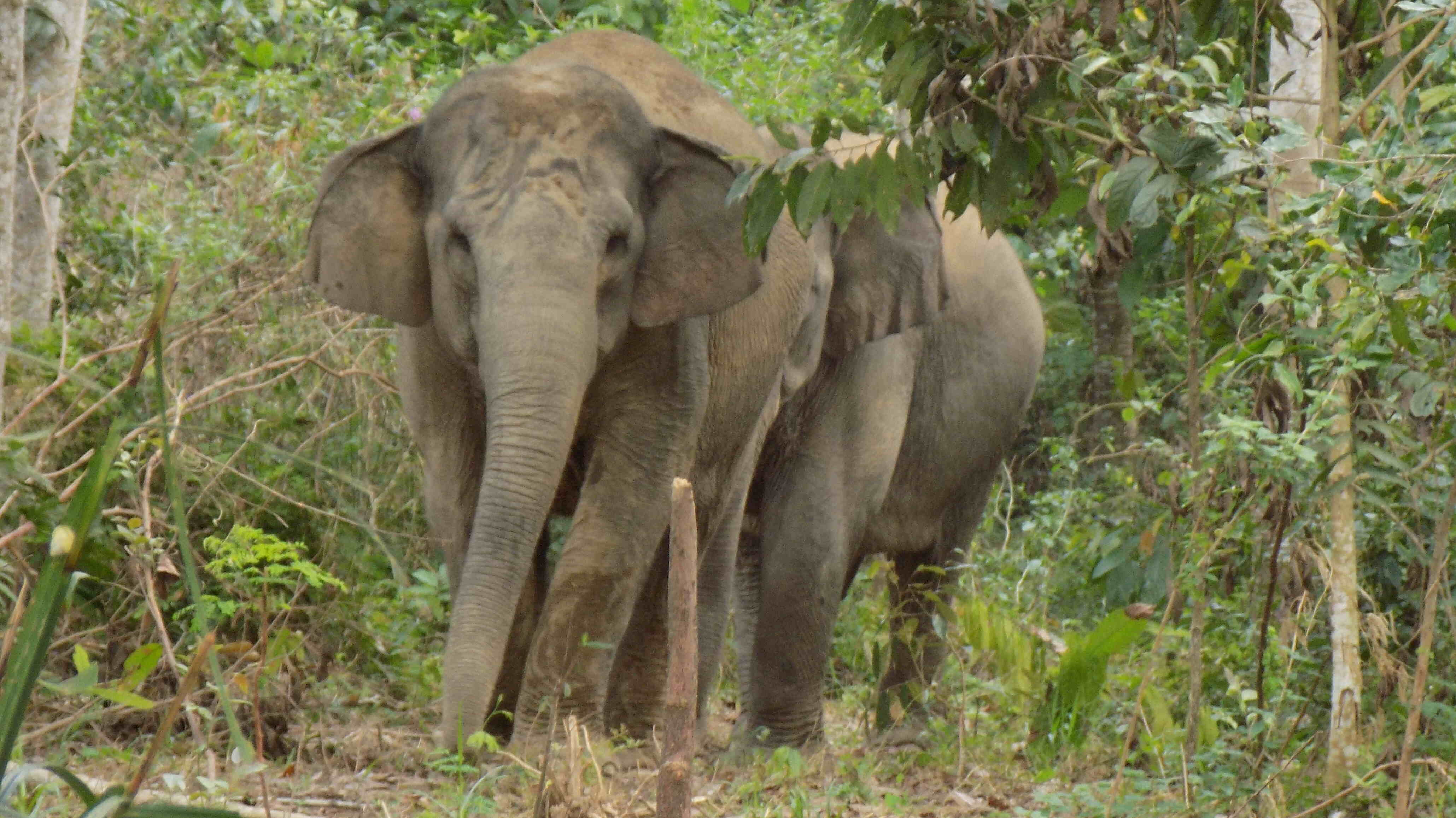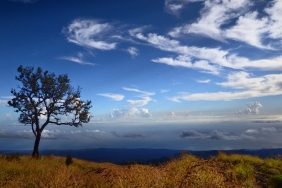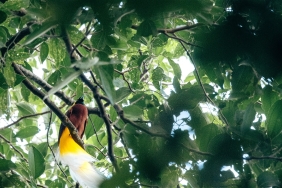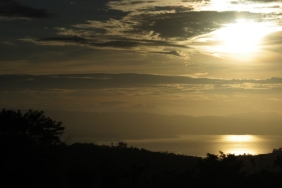SHARING STORIES, SHARING FEELINGS ABOUT SUMATRAN ELEPHANTS
By: Natalia Trita Agnika
"When talking about elephants, what comes to your mind?" asked Sunarto, WWF-Indonesia Wildlife Ecologist, when starting his presentation in the Public Discussion "Elephant Conservation in Changing Landscapes: Molecular Techniques for Ecological Studies, Conflict Mitigation, and Uncovering Illegal Wildlife Trade" on Thursday (11/08) at the Eijkman Institute of Molecular Biology, Central Jakarta. One answer that was almost echoed by all who attended the discussion was the elephant's large body.
Sunarto then explained that elephants have very large bodies because they eat very much. Elephants eat almost 300 kg of food per day. However, this large portion of food benefits the surrounding ecosystem. Because they eat so much, elephants produce so much dung. The dung can be used as fertilizer that fertilizes their range and helps spread plant seeds. There are even some plant seeds that can only be helped to spread through elephant feces and not by the feces of other animals.
The special story about elephants is one of many stories about elephants shared in the context of World Elephant Day, which is always celebrated every August 12. Furthermore, Sunarto also explained about the current condition of the Sumatran elephant (Elephas maximus sumatranus), which is increasingly pressured because its habitat is getting smaller due to forest conversion. "Now, there are elephants eating acacia trees because the forest is planted with acacia. Previously, elephants had never eaten acacia. The movement of elephants has also reached outside the conservation area, which has the potential to cause conflict between elephants and humans," explained Sunarto.
Stories about the condition of elephants that are increasingly threatened due to habitat loss, poaching, illegal trade, and conflicts between elephants and humans are stories that we often hear. But in the discussion about elephants, there is something new that can raise our optimism in elephant conservation efforts, namely the use of DNA studies. Prof. Dr. Herawati Sudoyo, Deputy Head for Fundamental Research at the Eijkman Institute of Molecular Biology shared information that the research institute has conducted DNA studies on Sumatran elephants taken from elephant dung samples in several pockets of elephant habitat in Sumatra, especially in Tesso Nilo. "We obtained various population information, such as population size, individual genetic profiles, genetic diversity, sex ratio, and distribution," Herawati explained.
From the elephant dung DNA samples that have been collected in the Tesso Nilo National Park area and its surroundings, the team from the Eijkman Institute managed to identify 113 different individuals and can estimate the minimum population size of Sumatran elephants in the Tesso Nilo habitat enclave at the time the samples were taken at around 154 individuals. In addition to population and kinship studies, this DNA study can also be used for forensic purposes in law enforcement of illegal wildlife trade. One example is the case of the killing of the elephant Yongki.
Until now, the cause of Yongki's death remains a mystery. However, the Eijkman Institute already has Yongki's elephant DNA specimen. "If we find evidence of elephant ivory, we can match whether the ivory belongs to Yongki. This information can be used to track and take action against the owner, ivory trader, and the perpetrator who killed Yongki," Herawati added.
The public discussion moderated by Anwar Purwoto (WWF-Indonesia's Sumatra and Kalimantan Program Director) was also attended by drh. Dedi Chandra from Way Kambas Elephant Conservation Center, Nyoman Iswarayoga (Director of Communication and Advocacy WWF-Indonesia), Listya Kusuma Wardhani (representative of the Director General of Natural Resources & Ecosystem Conservation), Devy Suradji (Director of Marketing WWF-Indonesia), Krismanko Padang (Chairperson of the Indonesian Elephant Communication Forum), and musician Tulus who also campaigned for the #Do Not Kill Elephants action.
Tulus shared his experiences and memories of the elephant Yongki. Despite having a song and album titled "Gajah", it seems that since childhood until his work was released, Tulus had never interacted directly with elephants. Finally, the opportunity to interact directly with elephants arose during the making of the music video for the song "Gajah". With the help of a team from WWF-Indonesia, Tulus filmed in Bukit Barisan Selatan National Park (TNBBS) in May 2014.
"The first thing that made me fall in love was when mahout (elephant handler) told me to get acquainted with Yongki first. He said the elephant would know whether our intentions were good or not," Tulus recalled. Yongki's tragic death, which coincided with Tulus winning the Anugerah Musik Indonesia award, left him sad, angry and devastated. Seeing that reality, Tulus could not remain silent. He created the #JanganBunuhGajah program. One of his activities was to sell special edition merchandise. The profits from the sale of these products are collected and used entirely for the procurement of location detection collars (GPS Collar Satellite) for Sumatran elephants in conservation areas.
The Public Discussion at the Eijkman Institute was closed with a symbolic handover of donations for the procurement of GPS Collar Satellite from Teman Tulus to WWF-Indonesia for the conservation of Sumatran elephants.
Happy Global Elephant Day! #GEDay





